DDP Talks To
"The Devil Ties My Tongue" by Amy Seiwert performed for the SKETCH Series, 2013. Photo by David DeSilva. Courtesy of Amy Seiwert's Imagery
December 31st: Jacob's Pillow: Ann & Weston Hicks Choreography Fellows Program, December 31st: New England Presenter Travel Fund, December 31st: Central Pennsylvania Youth Ballet Scholarship, December 31st: 24 Seven Dance Convention, December 31st: National Theater Project Presenter Travel Grant, December 31st: Breck Creek Artist-in-Residence Program, December 31st: Indigo Arts Alliance Mentorship Residency Program, January 22nd: Opera America Grants, March 3rd: Dance | NYC: Dance Workforce Resilience (DWR) Fund, March 31st: SIA Foundation Grants
×
"The Devil Ties My Tongue" by Amy Seiwert performed for the SKETCH Series, 2013. Photo by David DeSilva. Courtesy of Amy Seiwert's Imagery
2 February 2019
By Kathi E.B. Ellis
This year’s Choreographers Showcase — #ChorShow — is a show that’s unlike any other program the Louisville Ballet has produced.
It follows in the tradition of company members, and sometimes guests, creating new pieces of dance. There the similarities fade.
This year’s show is in a non-traditional space; within that space each work is site-specific. Continuing Producing and Artistic Director Robert Curran’s aesthetic of pairing dance with other genres, each of the five ballets in #ChorShow has a different designer, who are drawn from the Kentucky College of Art + Design. KyCAD also provides the venue at their Third Street campus. The short pieces are scheduled multiple times at each performance, meaning that audiences select which piece they see in what order. A food truck and an outside bar add to the casual vibe of the evening.

Guest choreographer Tim Harbour, resident choreographer at the Australian Ballet, is paired with sculptor Matt Weir. Together they explore a future that might be dystopian, and how young people will exist there. Weir’s overhead canopy installation morphs beautifully in Daniel L. Perez’s excellent and evocative lighting design; is it natural, is it a chemical formation post-eco tragedy — either or both could be true at any point.
Read the full article on WFPL’s Arts and Culture Blog.
Watch the video below to hear choreographer Penny Saunders talk about her new work for Grand Rapids Ballet, TESTIMONY.
Look out for a Meet the Choreographer soon with Penny and our founder, Liza Yntema.
6 November 2018
By Michael Paulson
There were babies at Studio 54.
That’s not a reference to actors dissatisfied with their dressing rooms or patrons griping about their seats.
It’s just that the play now being performed here — a journalism comedy, starring Daniel Radcliffe, Cherry Jones and Bobby Cannavale, called “The Lifespan of a Fact” — is the first on Broadway with an all-female design team. Most of them have children. And several of those children are very young.

So when Leigh Silverman, the director of the play, was putting together her team, she asked what seemed like a straightforward question: What would the new mothers among her designers need to manage the long hours required for preparing a new stage production?
The question of how well — or poorly — the theater world accommodates child care has been talked about for years, and is closely bound up with the discussion of why women are so underrepresented as writers, directors, and designers at the industry’s highest, and highest-paying, levels. Of the 20 nonmusical playsannounced for Broadway thus far this season, just three — including “Lifespan” — are directed by women.
Read the full article in the New York Times.
7 February 2019
By Daniel Duane

Read two excerpts from the article:
It was already afternoon when Valenti decided she had to get in the water. She felt a burden to prove that female big-wave surfers can keep up with men — more so because she helped found, in 2016, the Committee for Equity in Women’s Surfing, an activist group that started with the modest ambition of getting women invited to big-wave contests, from which they had always been excluded, and grew unexpectedly into a reckoning for the global sport of competitive surfing.
…Like most female surfers of her generation, Valenti grew up unaware that women even rode big waves. She learned to surf at age 7 in Dana Point, Calif., in Orange County. In third grade, she wrote an essay about her dream of becoming a professional and surfing the powerful Banzai Pipeline on the North Shore of Oahu. Valenti excelled in youth contests and, like many girl surfers, idolized Kennelly — a top pro at the time, equaling the best men at displays of fearless aggression and technical mastery in dangerous surf. When Valenti was in her early teens, she signed modest endorsement deals with surfwear companies. She subscribed to every surf magazine but found them boring because they featured action shots of only boys and men, with girls strictly on the beach in bikinis. Valenti’s frustration deepened when she became convinced that her sponsors paid more to girls who looked like models, even if Valenti outsurfed them. When she protested, she lost her endorsement contracts.
Read the full article in the New York Times.
7 February 2019
By Brangien Davis
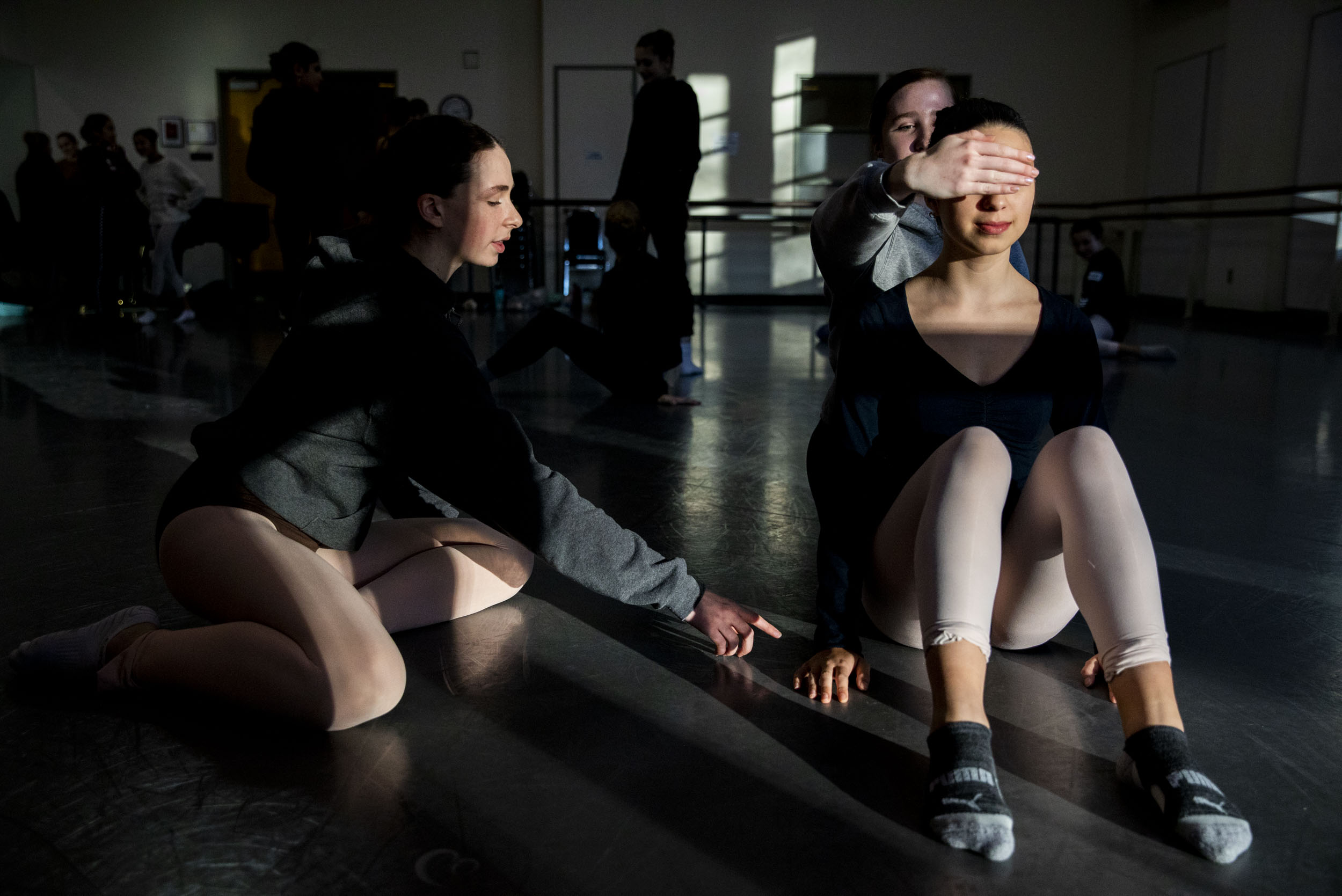
On a chilly Wednesday night in Seattle, a group of young dancers is planting seeds of revolution.
The girls — all 14 to 16 years old — are flocked on the floor of a Pacific Northwest Ballet rehearsal studio, chatting nervously while parents file into the viewing area. As advanced-intermediateLevel VII students enrolled in PNB School, these young women have been in dance recitals before, but this one is different. This time, they’ve written the choreography themselves.
“Ballet is woman,” said legendary choreographer George Balanchine. He had a point, except when it comes to the choreography.
While modern dance has long drawn female choreographers, contemporary ballet remains largely created by men. The women who tend to pop up on seasonal ballet lineups — Twyla Tharp, Jessica Lang, Annabelle Lopez Ochoa — are exceptions to a norm that has existed since approximately the Renaissance. (PNB’s 2018-2019 season includes 13 male choreographers and justone woman, Robin Mineko Williams, on the Director’s Choice mixed bill.)
In an effort to help right this disparity, PNB School Director Peter Boal has said he is currently working to “rectify an imbalance that exists in ballet.” This fall, PNB launched a program that aims to dig toward the root of the problem by encouraging women to consider choreography as early as young teens.
Read the full article on Crosscut.
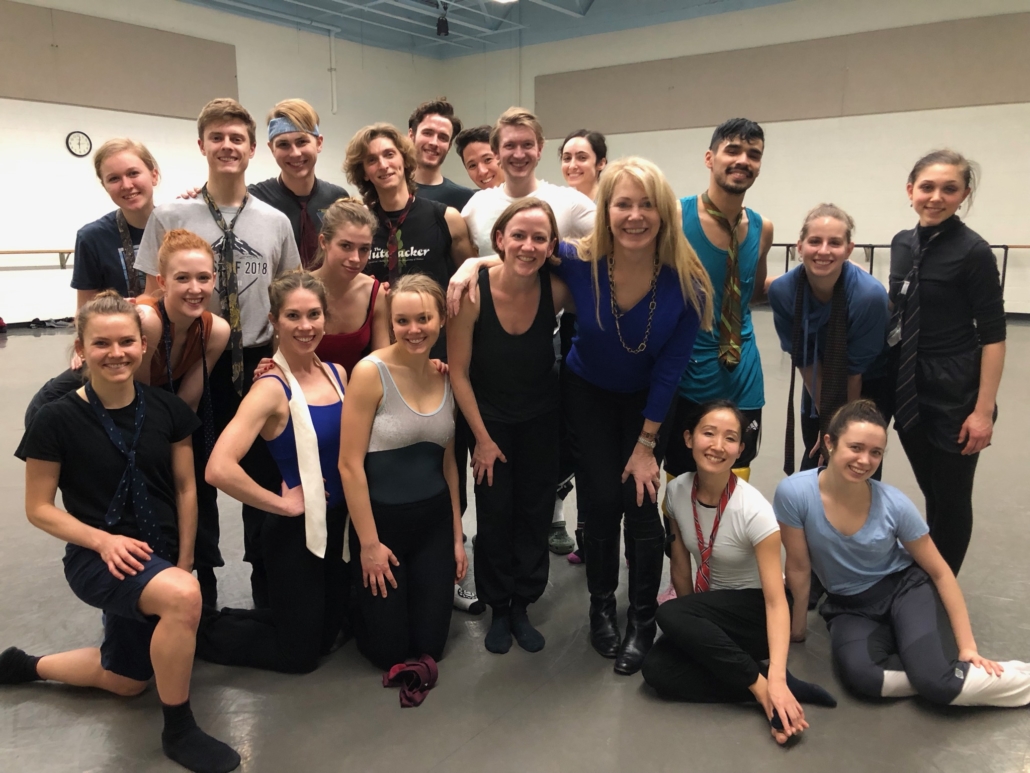
DDP is excited to share highlights of some of Penny Saunders‘ upcoming work as Resident Choreographer at Grand Rapids Ballet, under the leadership of Artistic Director James Sofranko. Her new piece is entitled TESTIMONY, and DDP founder Liza Yntema was one of the early few to have the pleasure of watching the work in the studios of Grand Rapids Ballet.
See more videos from the work below:
An interview with Saunders by Yntema will be featured soon on our website as the first in the “Meet the Choreographer” series.

Oregon Artswatch shared a preview of a panel in April led by Brian McWhorter, the Eugene Ballet Music Director. Typically, DDP praises such panels as noble opportunities to analyze topics of inequity and the bizarre narratives that we accept as the norm in ballet. The upcoming panel, hosted by the University of Oregon, however, selected an image of a tutu-clad man in chains for its thumbnail and headlining poster. The content of “Ballet Outsider” seems appropriate and wide-ranging, but this image is grossly inappropriate and makes a joke out of the very real topics and challenges headlining this event. The gender held back by chains in this art is certainly not male. Read the event description below:
Inspired by the #MeToo movement, challenges to age-old ballet narratives, and questions surrounding race, gender roles, sexism, equality, eating disorders, and abuse in ballet, Eugene Ballet Music Director Brian McWhorter hosts a panel discussion exploring the state of ballet prior to the Eugene Ballet’s production of Romeo and Juliet. (The event is part of the ongoing Ballet Outsider series). Guest speakers include Lara Bovilsky, an associate professor of English at the University of Oregon whose work focuses on early modern British understandings of group and individual identity; Jamie Friedman, an assistant professor of English at Linfield College, who specializes in identity politics in 14th-century English literature; and Shannon Mockli, a University of Oregon associate professor of dance and choreographer known for provocative, individualistic work.
The next Ballet Outsider panel takes place at noon April 10. It will feature Eugene Ballet resident choreographer Suzanne Haag, who is choreographing an updated version of The Firebird that puts the story in a contemporary context.
Access the announcement of the panel here. Read about the panel in Oregon Artswatch.
By Isabelle Vail
1 February 2019
Amy Seiwert is well-known to the DDP team as one of the leaders supporting women in dance and equity in the arts. She will be interviewed this week by DDP founder Liza Yntema during a stop on her Listening Tour to Smuin Ballet, where Seiwert is choreographing a world premiere on the company.
In the Sacramento News & Review, Seiwert’s work for Sacramento Ballet, of which she is Artistic Director, is described as invigorating. Tessa Marguerite Outland writes:
Tchaikovsky’s overture floats out of the orchestra pit, and children dash across a dimly lit stage. The scene is set, and the audience waits for Clara, a young girl with bouncing curls, to appear and receive her Christmas gift.
But this time, it’s Marie who twirls in to accept the nutcracker. Unlike Clara, she’s growing out of dolls and into womanhood, though the gentle girl still dreams of lands with sugar plum fairies, Arabian dancers and a toy prince.
In December, The Sacramento Ballet debuted a different version of The Nutcracker, this time under the leadership of a new artistic director, Amy Seiwert. Seiwert admitted that creating her own version was terrifying; looming over the production was the shadow of a beloved 30-year-old legacy, cast by her predecessors and former teachers Ron Cunningham and Carinne Binda.
Read the full feature in the Sacramento News & Review.
Look out for Yntema’s interview with Seiwert soon on our blog!
The absolute first thing to know about Christine Cox is that she is incredibly kind, and the second that she has huge reserves of energy. The enthusiasm, optimism and genuine joy she brings to even the smallest detail or the briefest encounter, do much to explain the extraordinary success and outsized impact of her influential company, BalletX, which over the last 13 years has survived and prospered as the second, smaller company in Philadelphia, growing a fantastically loyal and energized audience base.

Cox has managed to create a legacy of groundbreaking work: by the end of the 2018-2019 season, BalletX will have premiered 75 new works, while also keeping the Company consistently in the black. This extraordinary combination of business acumen and artistic fearlessness, has resulted in a new $850,000 Ballet Center for World Premiere Choreography: a 5,000 square foot light filled studio, as well as for the first time this season, the ability to pay health care costs for dancers who are on a 37 week contract and her full time staff.
Founded in 2005 with Matthew Neenan, and now lead by Cox who is Artistic and Executive Director BalletX consistently pushes to the cutting edge by producing new works by choreographers who are at many stages of their development and from all over the world.. From Annabelle Lopez Ochoa to Penny Saunders, the Company under Cox’s steady hand, has provided a platform for some of the best and most innovative modern ballet choreographers, many of whom are women, including Gabrielle Lamb, Helen Pickett and many years ago her own work.
Oh, and yes, she also finds time to be a mom of 2 young boys.
Liza Yntema sat down with Christine Cox in early December:
LY: You mentioned in passing that you are dyslexic. It doesn’t seem to have slowed you down at all?
CC: I am absolutely a do-er, not a dreamer. Because school was a such a challenge for me, I learned that hard work is the only way to accomplish anything. For me moving felt like I was home and dance became a safe haven. What I gained from being a little slower in school was how to navigate in society, How to communicate with people and to to team build.”
LY: You mention that it was challenging for you to fit into the ballet world, please explain?
CC: I started developing at age 10 and was a mature teenager. I was also a strong willed young lady who’s character and personality was much different than other dancers. I looked like a women and that did not serve me well as a professional ballet dancers. Directors wanted me to not have curves and as thin as possible.
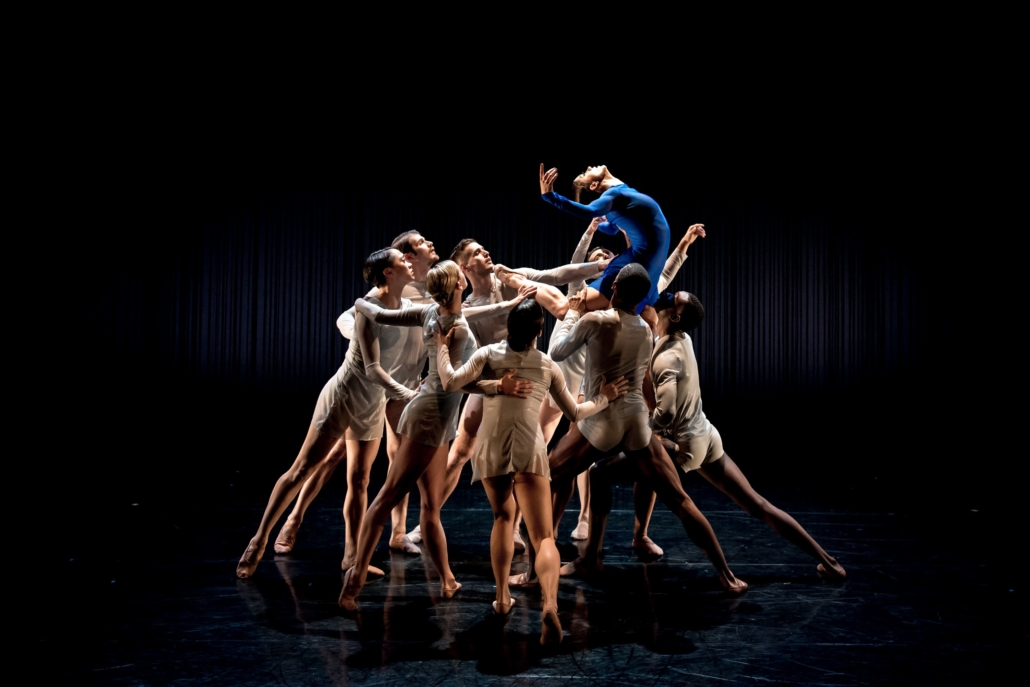
LY: You seem to be able to do it all, yet you made the decision not to choreograph any more?
CC: In 2008 I was 9 months pregnant and choreographing, while also developing a company. My gut instincts told me to stop dancing and choreographing and focus on being a new Mom and growing BalletX. The first step was formalizing a company that offered annual contracts instead of gigs.I knew we needed to establish a home theater and our residency at The Wilma Theater was and is a great partnership. I wanted to build a passionate audience that fell in love with new ballets
LY: You have assembled an incredible roster of talent over the years. How do you find choreographers?
CC: I find choreographers in all sorts of ways. Many pass along their work through emails and sometimes I get to see it live when time permits.I love work that ignites my soul and touches my heart. I love work that surprises me and gets my brain flowing. I know quickly if a choreographer has something I am curious about. I am also looking for the dancers to grow and learn from the process. New ballets are in important and help the field stay relevant.
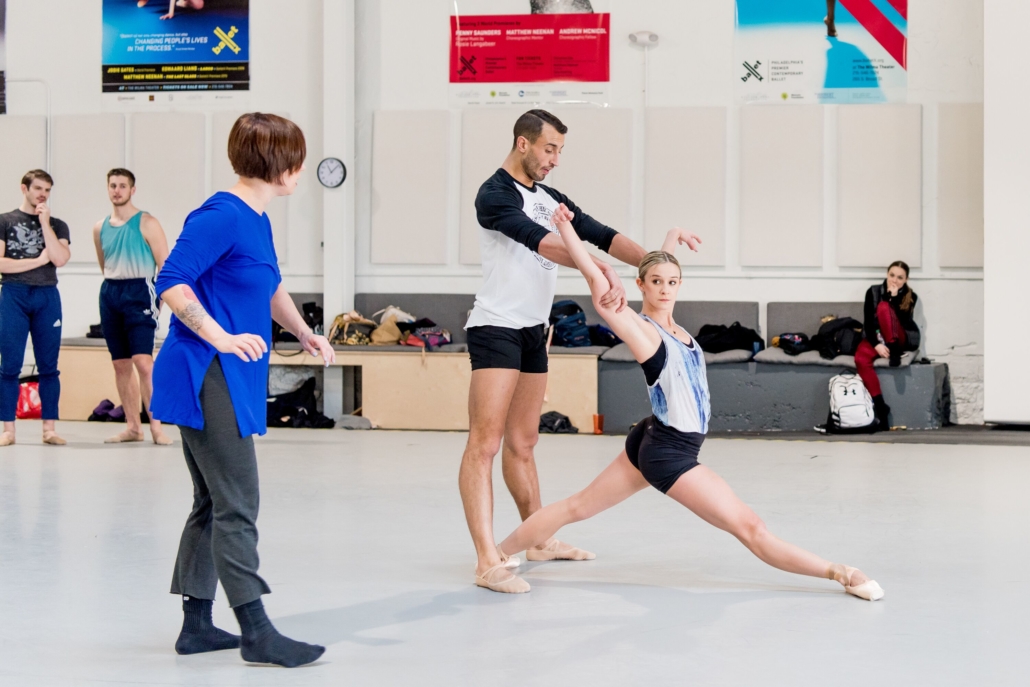
LY: Do you see a difference in how women and men approach choreography?
CC: Well, one very basic differences is that more men seem comfortable promoting themselves. They will reach out multiple times while I do not get a lot of submissions from women. Maybe they are just not as many out there? Haha – isn’t that part of the problem?
It’s hard for me to compare men and women because everyone is different. As I women I know I like to view work that has some meaning or purpose behind its development. I get tired of movement for movement’s sake unless it has a real intention.
LY: In 2008, you hosted a panel with Helen Pickett and Annabelle Lopez Ochoa on the state of the dance industry and being a female choreographer. If I asked you for an update today, what would you say?
CC: It really doesn’t feel much different. I have to seek out female choreographers and am making an effort to support their work at BalletX. This season I am commissioning 4 world Premieres by Women out of 7.
LY: Finally, I was interested in where you see BalletX headed, back to the model of dancers in socks streaking across the stage at a dead run.
CC: I am tired of socks! I often ask choreographers to make work en pointe company because I am curious about what the shoe can do to help or hinder the dance vocabulary.
LY: And to that point, I am incredibly excited you are working with Annabelle Lopez Ochoa again, on a beautiful uplifting story?
CC: Yes, this summer Annabelle will be back working with us on a new full length ballet of The Little Prince by Saint-Exupéry.
LY: I cannot wait! So much would rather see that than another Nutcracker.
CC: And we have another super talented choreographer working with the Company now, Katarzyna Skarpetowska is BalletX’s 2019 Choreographic Fellow. [See video below.]
LY: Ok, big picture, talk to me about the future of ballet..
CC: I can have a dream for the company to grow but everything comes down to having the support. That is a challenge for all non profits. My goal is to continue to push our capabilities at BalletX, support the creation of new work with a minimum of 7 world premieres a year, making BalletX a hub/lab of dance creation. Focus on the development of artist and open our home for the community to experience dance in a whole new way. Continue and expand our Dance eXchange program for 3rd and 4th grade students in Philadelphia Public schools, while training and supporting teaching artist. Continue to tour and bring programs that inspire new audiences to fall in love with contemporary ballet staff.
Bigger picture for the future of ballet is unclear. I think we have a lot of potential to touch and inspire people if we create opportunities to support new works.
Pictured from right to left: Patricia Barretto, CEO of Harris Theater Chicago, Tamara Rojo, Artistic Director of the English National Ballet, DDP Founder Liza Yntema, and New York Times dance writer Marina Harss at the Guggenheim’s Works & Process.
DDP is interested in dialogue with artistic and executive leadership promoting women and their interests. Our founder, Liza Yntema, has begun a listening tour, visiting on behalf of Dance Data Project at leading domestic companies. Previously, Ms. Yntema visited the ABT for its inaugural choreographic Incubator, as well as attending the Guggenheim’s Works & Process featuring Marina Harss, Patricia Barretto and Tamara Rojo discussing the English National Ballet’s new Giselle by Akram Khan. After a stop at BalletX in Philadelphia, Liza has learned more about their Choreographic Fellowship, and her interview with Artistic Director Christine Cox will appears in a feature for the DDP News page. She intends to familiarize herself with each major company’s culture, while working to advance those companies with DDP’s mission of gender equity in all aspects of classical dance.
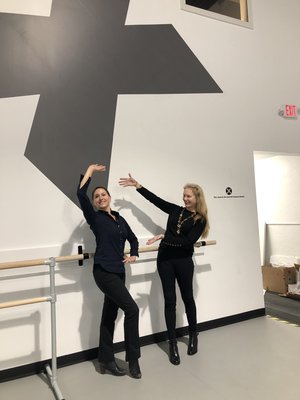
Reach out to us to learn more about our mission.
"The Devil Ties My Tongue" by Amy Seiwert performed for the SKETCH Series, 2013. Photo by David DeSilva. Courtesy of Amy Seiwert's Imagery
